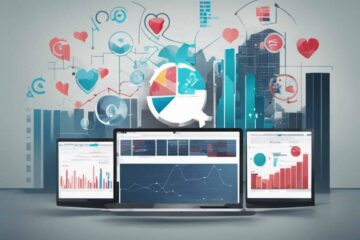In nonprofit fundraising, utilizing first-party data is crucial for success. This guide is for fundraising leaders, exploring data collection and ethical use, turning it into a tool for personalized campaigns and donor trust.
The Power of First-Party Data
First-party data is the info we get directly from our interactions with donors, like through our website, emails, or events. This kind of information is really valuable because it gives us a clear picture of what our supporters like and how they behave.
Knowing this helps us create campaigns that speak to our donors’ interests, making them more engaged and likely to stick around.
Let’s look at the key ways this data is changing the game in field sales.
- Enhanced Personalization: First-party details allow for the creation of highly personalized sales strategies, ensuring that each supporter feels uniquely valued and understood.
- Improved Donor Insights: It offers deep insights into behavior and preferences, enabling sales teams to anticipate needs and tailor their approach accordingly.
- Efficient Resource Allocation: Utilizing this information leads to more efficient allocation of resources, focusing efforts where they are most likely to yield results.
- Data-Driven Decision Making: Sales strategies backed by first-party information are more likely to be effective, as they are based on real, actionable insights.
- Increased Donor Loyalty: By understanding and addressing backer needs more effectively, first-party statistics help in building long-term loyalty.
- Better Campaign Targeting: This data assists in segmenting the donor base effectively, ensuring that campaigns are targeted to the most receptive audiences.
- Streamlined Communication: It enables more streamlined and effective communication, as messages can be tailored to resonate with the specific interests of supporters.
In short, first-party data is a game-changer in fundraising. It gives us real insights into what our supporters are like, helping us create smarter and more heartfelt strategies.
This means we connect better with our supporters, leading to stronger relationships and growth.
Collecting and Organizing First-Party Data
Collecting first-party information is all about finding the sweet spot between gathering useful insights and respecting our donors’ privacy. It’s like a balancing act – we carefully gather the information we need for our fundraising while always staying ethical.
Gathering and organizing information helps us make smart decisions and keep our supporters happy. Plus, when our data is neat, our fundraising campaigns hit the mark more often, making every chat with donors count. And remember, it’s not just about gathering data; how we keep and use it matters too.
That’s where tools like CRM systems come in handy – they make gathering, organizing, and understanding our statistics a whole lot easier.
With these considerations in mind, let’s explore practical tips for effective first-party data collection and organization.
1. Define Clear Data Objectives
Establish what information is most relevant to your fundraising goals and focus on gathering it. This ensures that the details you gather are purposeful and align with your strategic objectives.
2. Prioritize Donor Privacy
Implement strict data privacy policies and educate your team on their importance. Ensuring donor details are handled ethically is paramount to maintaining trust and compliance with legal standards.
3. Utilize Advanced CRM Tools
Invest in robust CRM software that offers comprehensive features for data collection, organization, and analysis. This technology is instrumental in turning raw information into actionable insights.
4. Regular Data Audits
Conduct regular audits to ensure accuracy and relevance. This helps in identifying and rectifying any discrepancies or outdated information.
5. Data Segmentation
Segment your data to tailor communications and campaigns effectively. This allows for more personalized interactions with supporters, enhancing their engagement and experience.
In today’s fundraising world, gathering and organizing first-party statistics is a must. These practical tips help us make the most of our information, leading to smarter strategies and stronger connections with supporters.
Always remember, data is more than numbers – it’s how our backers speak to us.
Analyzing and Visualizing Data
In fundraising, analyzing details helps us turn numbers into stories about our supporters. When we visualize this information, it becomes clear and easy to understand, showing us important trends and patterns.
This is how we get to know what our supporters like and what they’re likely to do next. It’s about making smart choices and explaining things in a way that’s straightforward and meaningful.
When we analyze statistics, it’s crucial to get it right and make sure it truly represents our backers. Using smart tools like Tableau or Microsoft Power BI can help. With this in mind, let’s dive into practical ways to analyze and show off our fundraising details.
1. Establish Clear Analysis Goals
Determine what you want to learn from your statistics, be it behavior patterns, donation trends, or campaign effectiveness. This focus will guide your analysis efforts more efficiently.
2. Choose the Right Visualization Tools
Select visualization tools that align with your organization’s needs and capabilities. Tools like Tableau or Microsoft Power BI offer powerful ways to present information in an easily digestible format.
3. Regularly Update and Review Data
Continuously update and review your statistics to ensure their relevance and accuracy. Regular analysis can reveal evolving trends and enable timely strategic adjustments.
4. Train Your Team
Invest in training your team on data analysis and visualization tools. Skilled personnel can extract and present more meaningful insights from the information.
5. Share Insights Across Departments
Make data-driven insights accessible to various departments. This encourages a cohesive, organization-wide understanding and application of these insights.
In fundraising, turning information into stories isn’t just about crunching numbers; it’s key to our strategy. These tips help us use details to make smart decisions and connect with our supporters.
Think of it this way: every piece of information holds a story about our supporters, just waiting to be shared.
Personalizing Fundraising Strategies
Personalization in fundraising means talking to each backer in a way that clicks with them. It’s all about using the right words, tone, and ideas that suit each person’s unique likes and interests.
Personalization is a game-changer in fundraising. It’s all about making each supporter feel special and understood, which strengthens our bonds with them. This approach doesn’t just feel good; it works wonders too, boosting engagement and making campaigns more successful.
To get it right, we need to pay attention to what each supporter likes and their history with us. Now, let’s explore actionable tips for effectively personalizing your fundraising strategies.
1. Segment Your Donor Base
Categorize supporters based on factors like donation history, engagement level, and preferences. This segmentation allows for more targeted and relevant communication.
2. Utilize Dynamic Content in Emails
Incorporate dynamic content in emails that adjusts based on the recipient’s profile, ensuring that each supporter receives messages that resonate with their specific interests.
3. Leverage Donor Data for Tailored Messaging
Use insights from donor information to craft messages that reflect individual supporter’s interests and previous interactions with your organization, making each communication feel personal and thoughtful.
4. Create Donor Personas
Develop supporter personas to better understand different segments of your donor base. This can guide the creation of more effective and personalized fundraising strategies.
5. Regularly Update Donor Information
Continuously update and refine your understanding of each supporter. This ensures that your personalization efforts are based on the most current details.
In today’s fundraising world, personalization is essential. By using these strategies, we can create deeper bonds with our supporters and see better results. It’s simple: when we reach out to supporters in a more personal way, our messages hit home.

Final Thoughts | Building Relationships, Not Just Revenue
In fundraising, it’s not just about how much money we raise, but about the strong relationships we build and the lasting impact we make.
The real magic happens when we make each donor feel truly seen and valued. This is where good fundraising management software comes in. It helps us organize and understand our statistics better, so we can create more personal and meaningful experiences for our supporters.
Remember, every bit of information tells a unique story and helps us connect more deeply with our supporters. By using these tools, we can change the game in how we engage with supporters and set new standards in fundraising.



